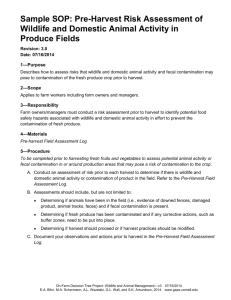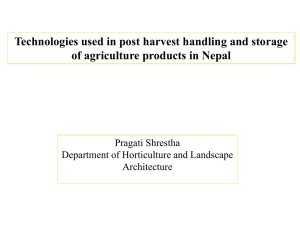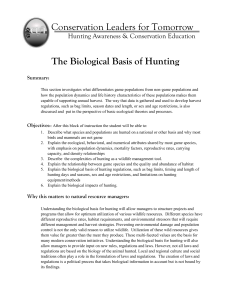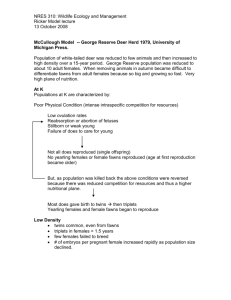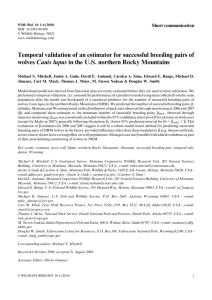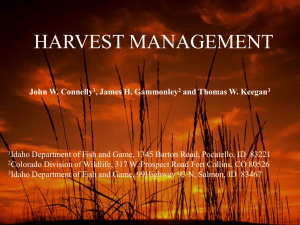Sarah Sells
advertisement
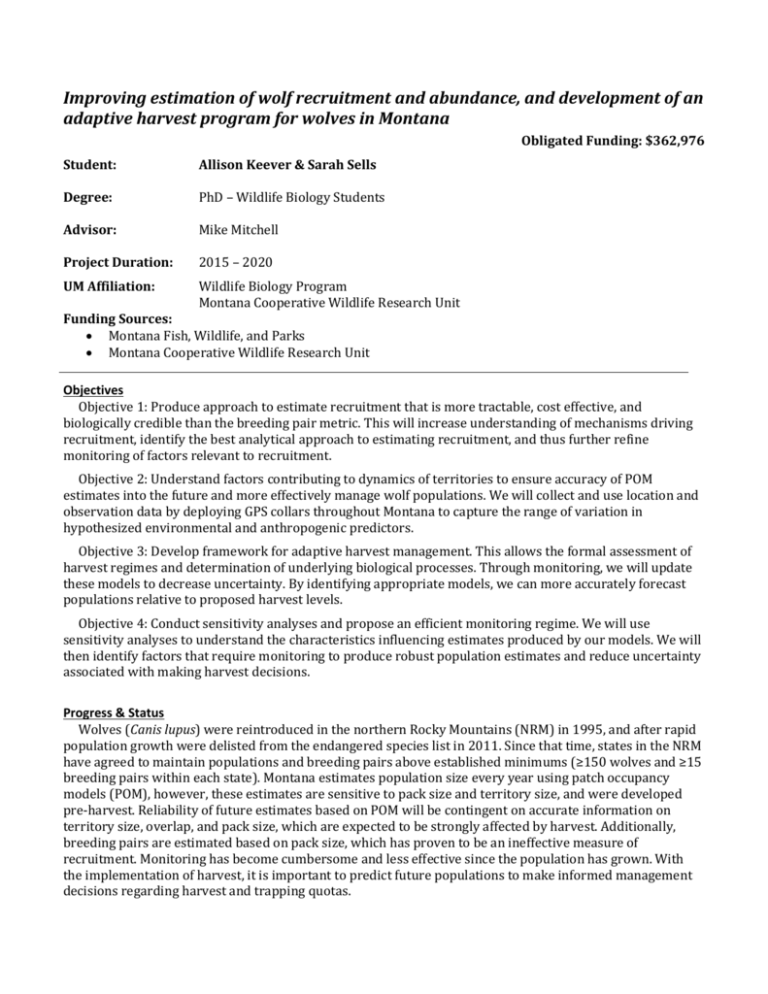
Improving estimation of wolf recruitment and abundance, and development of an adaptive harvest program for wolves in Montana Obligated Funding: $362,976 Student: Allison Keever & Sarah Sells Degree: PhD – Wildlife Biology Students Advisor: Mike Mitchell Project Duration: 2015 – 2020 UM Affiliation: Wildlife Biology Program Montana Cooperative Wildlife Research Unit Funding Sources: Montana Fish, Wildlife, and Parks Montana Cooperative Wildlife Research Unit Objectives Objective 1: Produce approach to estimate recruitment that is more tractable, cost effective, and biologically credible than the breeding pair metric. This will increase understanding of mechanisms driving recruitment, identify the best analytical approach to estimating recruitment, and thus further refine monitoring of factors relevant to recruitment. Objective 2: Understand factors contributing to dynamics of territories to ensure accuracy of POM estimates into the future and more effectively manage wolf populations. We will collect and use location and observation data by deploying GPS collars throughout Montana to capture the range of variation in hypothesized environmental and anthropogenic predictors. Objective 3: Develop framework for adaptive harvest management. This allows the formal assessment of harvest regimes and determination of underlying biological processes. Through monitoring, we will update these models to decrease uncertainty. By identifying appropriate models, we can more accurately forecast populations relative to proposed harvest levels. Objective 4: Conduct sensitivity analyses and propose an efficient monitoring regime. We will use sensitivity analyses to understand the characteristics influencing estimates produced by our models. We will then identify factors that require monitoring to produce robust population estimates and reduce uncertainty associated with making harvest decisions. Progress & Status Wolves (Canis lupus) were reintroduced in the northern Rocky Mountains (NRM) in 1995, and after rapid population growth were delisted from the endangered species list in 2011. Since that time, states in the NRM have agreed to maintain populations and breeding pairs above established minimums (≥150 wolves and ≥15 breeding pairs within each state). Montana estimates population size every year using patch occupancy models (POM), however, these estimates are sensitive to pack size and territory size, and were developed pre-harvest. Reliability of future estimates based on POM will be contingent on accurate information on territory size, overlap, and pack size, which are expected to be strongly affected by harvest. Additionally, breeding pairs are estimated based on pack size, which has proven to be an ineffective measure of recruitment. Monitoring has become cumbersome and less effective since the population has grown. With the implementation of harvest, it is important to predict future populations to make informed management decisions regarding harvest and trapping quotas.



